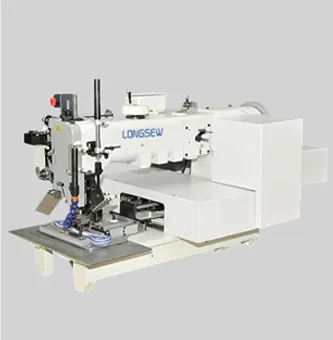lockstitch
The Art and Science of Lockstitch A Seamstress's Essential Tool
Lockstitch is an essential technique that every seamstress and tailor should master, as it forms the foundation of garment construction. This method, characterized by its strong and durable stitch, has been a preferred choice in the textile industry for centuries. Understanding the intricacies of lockstitch not only enhances sewing skills but also allows for the creation of beautifully finished products.
At its core, lockstitch is formed by interlocking two threads the upper thread, which is guided through the needle, and the lower thread, which is fed from the bobbin beneath the fabric. When the sewing machine operates, the needle ascends and descends, piercing the fabric and pulling the upper thread through. As the needle moves downward, it creates a loop with the upper thread, which is then captured by the hook from below, allowing the lower thread to encircle the upper thread. This interlocking mechanism forms a secure stitch that is not only aesthetically pleasing but also remarkably strong.
One of the primary advantages of lockstitch is its versatility
. This technique can be utilized across a range of fabrics, from delicate silks to sturdy denim, making it a go-to choice for various sewing projects. Additionally, lockstitch machines offer the ability to adjust stitch length, which can accommodate different fabric types and desired finishes. For instance, shorter stitches are ideal for lightweight fabrics that require a finer finish, while longer stitches can be employed for heavier materials, providing strength and durability.lockstitch

In terms of maintenance, ensuring that the sewing machine is well-maintained is crucial for achieving the perfect lockstitch. Frequent cleaning and oiling of the machine, along with regular needle changes, can significantly impact the quality of the stitches. A dull or damaged needle can result in skipped stitches or uneven seams, which can compromise the overall craftsmanship of a garment.
Moreover, understanding the role of tension is vital for lockstitch success. Proper tension settings, both on the upper and bobbin threads, are essential to produce an even and balanced stitch. If the tension is too tight, the fabric may pucker; if too loose, the stitches may unravel. Therefore, it's crucial for seamstresses to familiarize themselves with their machine’s tension settings and make adjustments as necessary.
In the realm of modern fashion, while new techniques and machines have emerged, the lockstitch remains a timeless method cherished for its reliability. Whether you are a novice preparing to sew your first garment or an experienced tailor crafting intricate designs, mastering the art of lockstitch is undoubtedly a step toward achieving professional-quality results. By embracing this fundamental technique, seamstresses can create not only functional clothing but also beautiful pieces that reflect their unique style and craftsmanship.
-
Boost Production Efficiency with a Pattern Sewing MachineNewsAug.29,2025
-
Industrial Excellence with the Best Heavy Duty Sewing MachineNewsAug.29,2025
-
Precision and Power with the Best Pattern Sewing MachineNewsAug.29,2025
-
Reliable Bulk Packaging Starts With the Right FIBC Sewing MachineNewsAug.29,2025
-
Advanced Packaging Solutions: Elevate Productivity with Jumbo Bag Sewing Machine and Industrial Stitching EquipmentNewsAug.29,2025
-
High-Performance Solutions for Bulk Packaging: FIBC Sewing Machine and MoreNewsAug.29,2025
-
Maximize Efficiency with an Industrial Cylinder Arm Sewing MachineNewsAug.28,2025


























